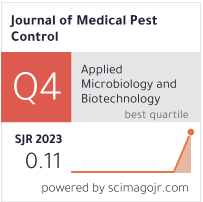Analysis of infection characteristics and drug resistance of Acinetobacter baumannii in elderly patients in a comprehensive hospital
Abstract
Objective: To analyze the infection characteristics and drug resistance patterns of Acinetobacter baumannii isolates from elderly patients in a comprehensive hospital, providing insights for effective clinical treatment and infection control.
Methods: Clinical specimens from elderly patients diagnosed with A. baumannii infections were collected over a defined period. Bacterial identification and antimicrobial susceptibility testing were performed using standard microbiological methods. Data on patient demographics, infection sites, and resistance profiles were analyzed.
Results: Acinetobacter baumannii infections were most commonly observed in respiratory and urinary tracts among elderly patients. The isolates demonstrated high resistance rates to multiple antibiotics, including carbapenems, cephalosporins, and aminoglycosides, indicating extensive multidrug resistance. Risk factors such as prolonged hospitalization and invasive procedures were associated with higher infection rates.
Conclusion: Acinetobacter baumannii poses a significant threat to elderly patients due to its multidrug-resistant nature. Strengthening antibiotic stewardship and implementing targeted infection control measures are essential to manage these infections effectively.
Full text:
PDFReferences
Tian K., Shan Z., Zhang K., Li Y., Qi J., Chen X., Wang M., Li L., Song G.



